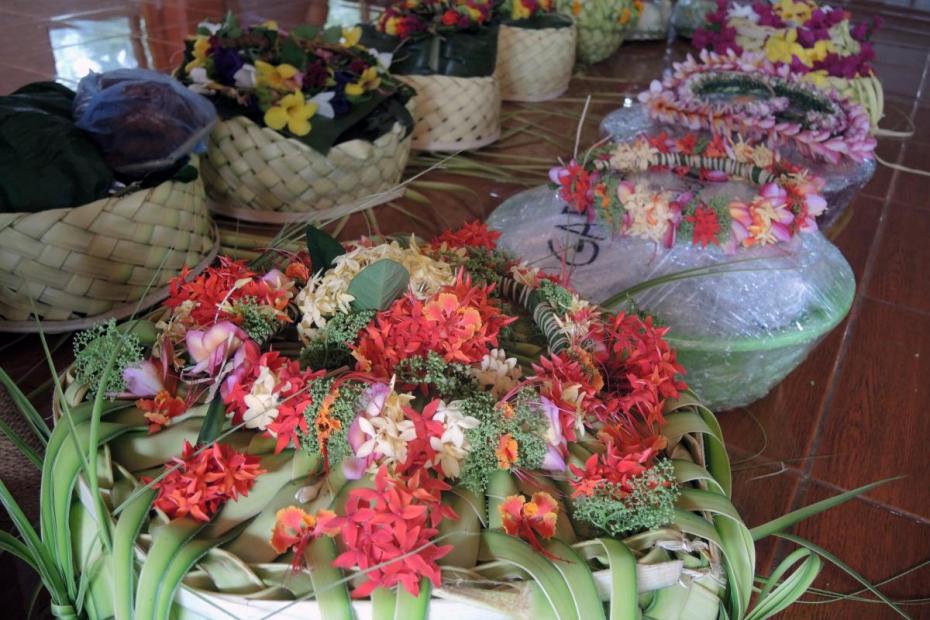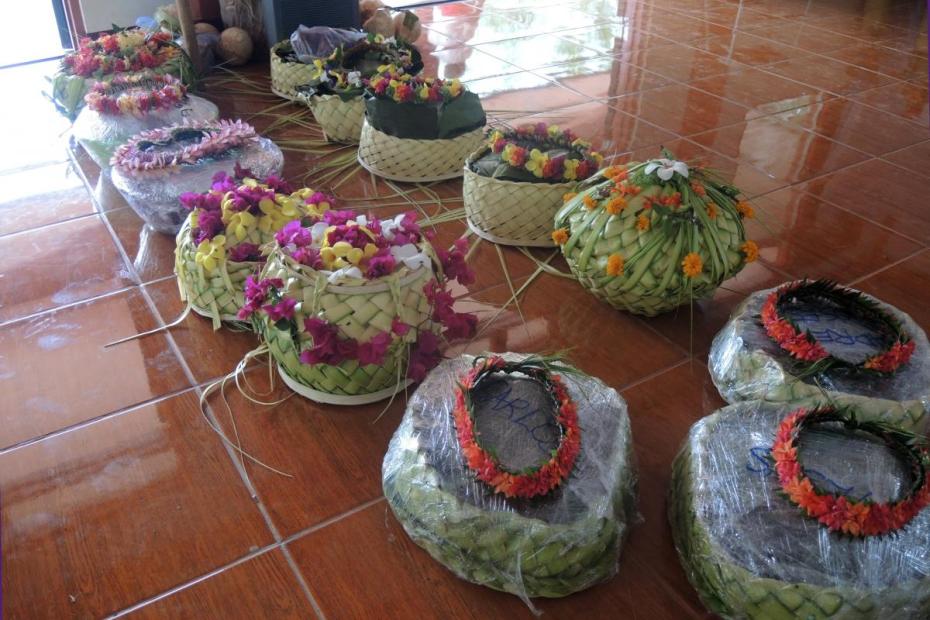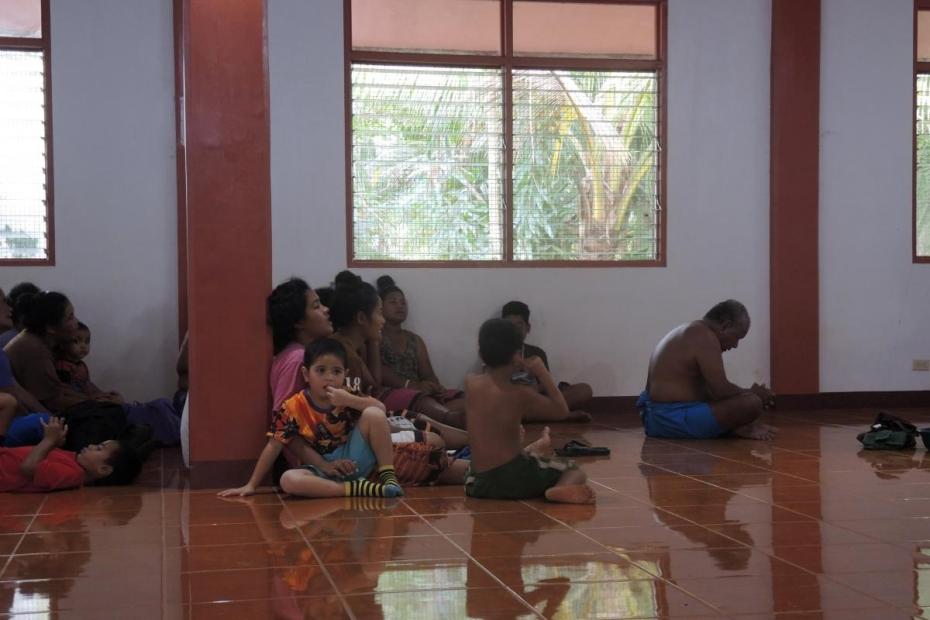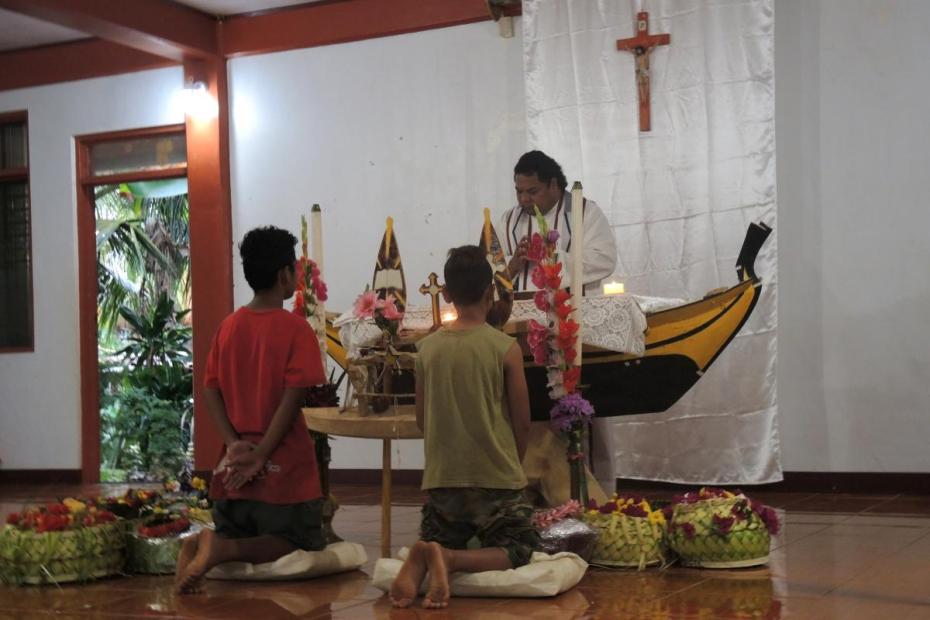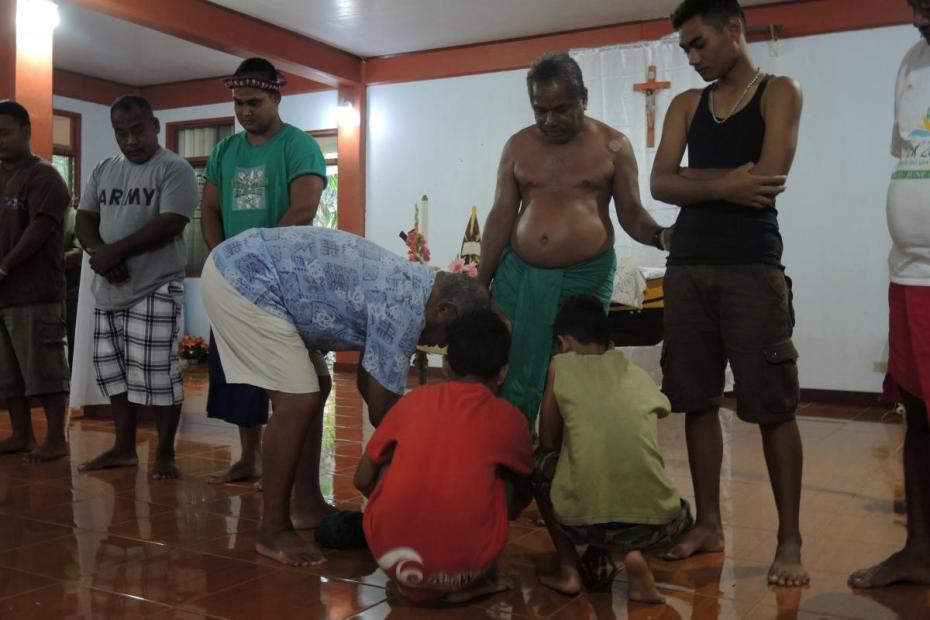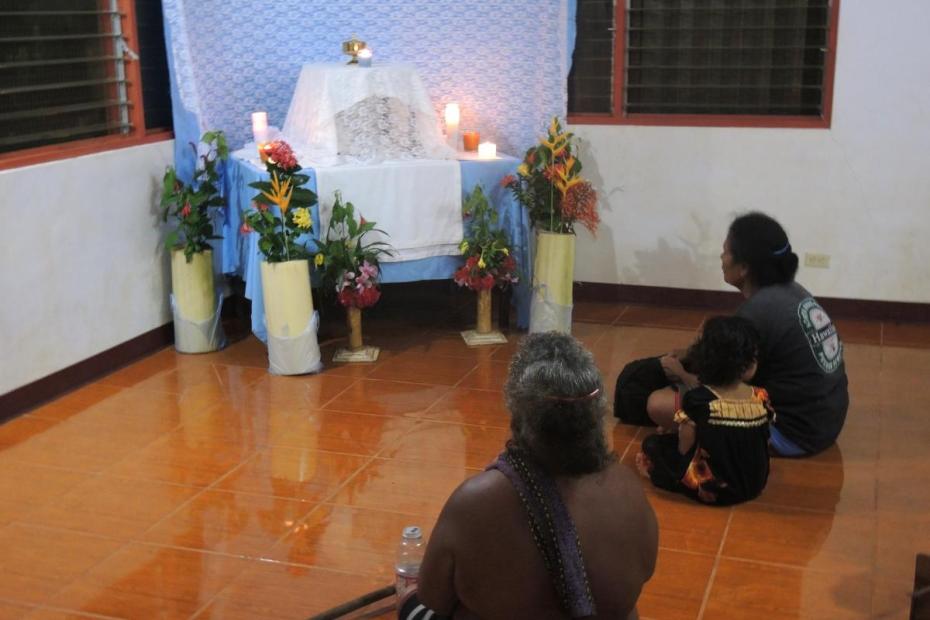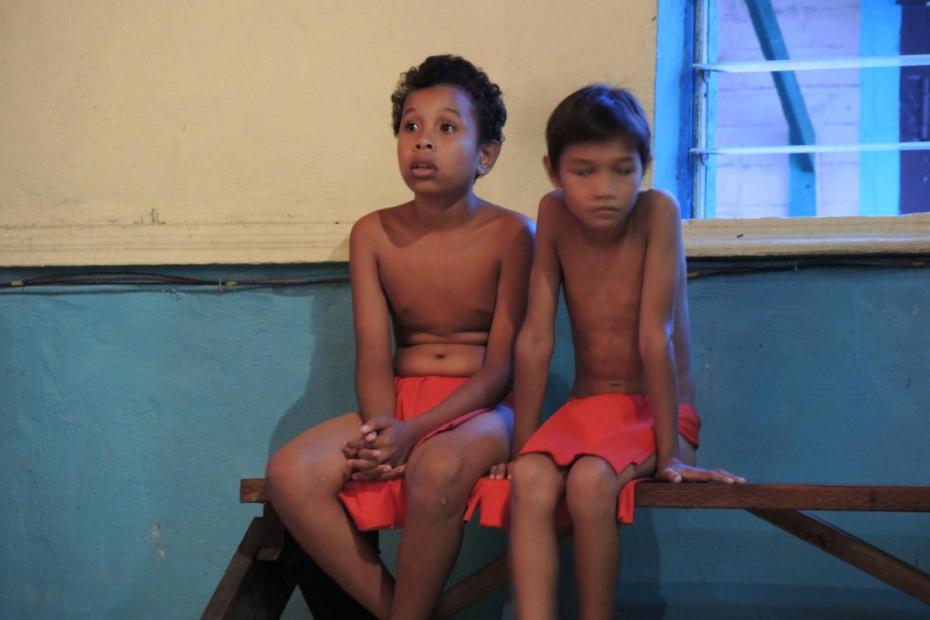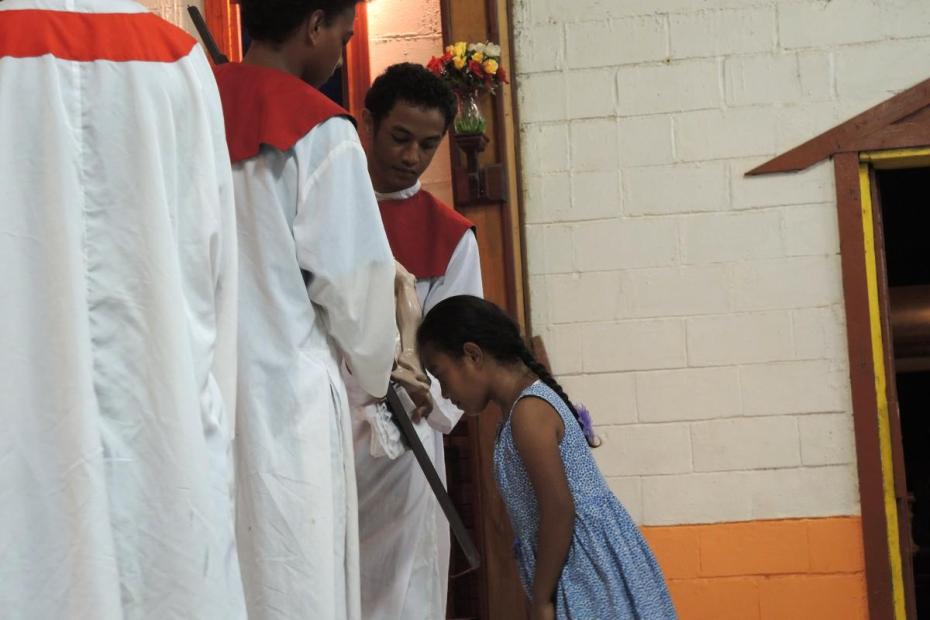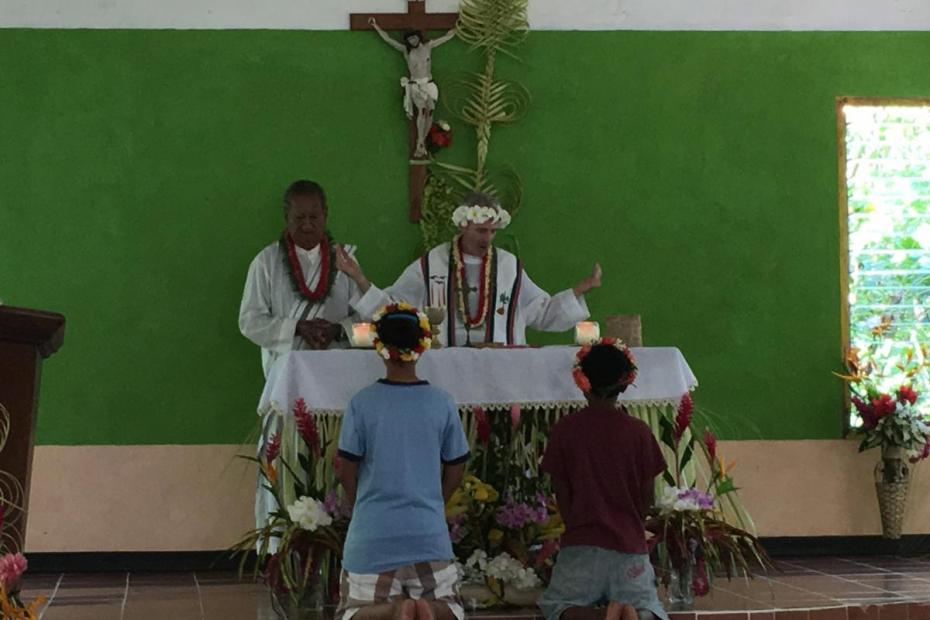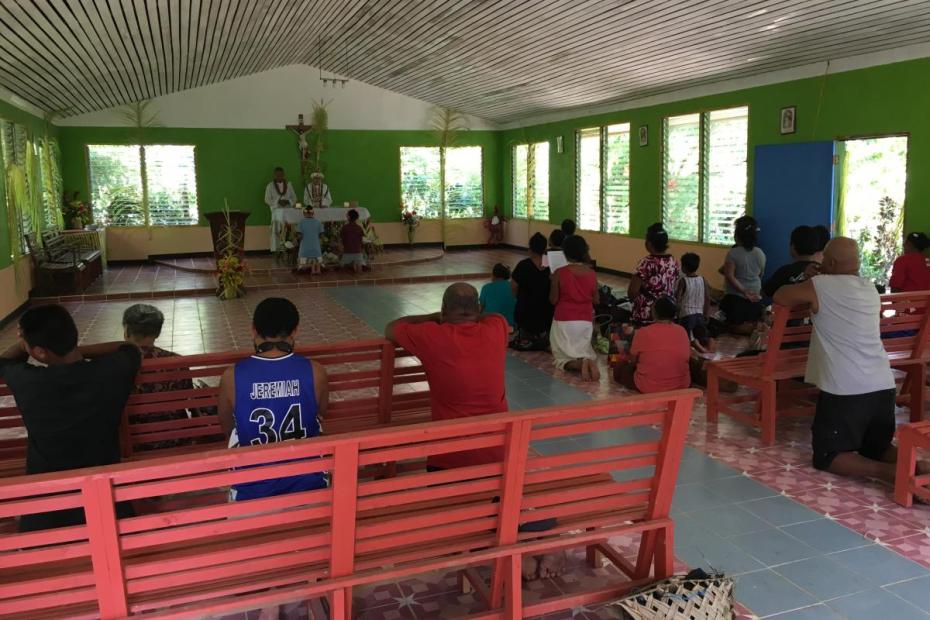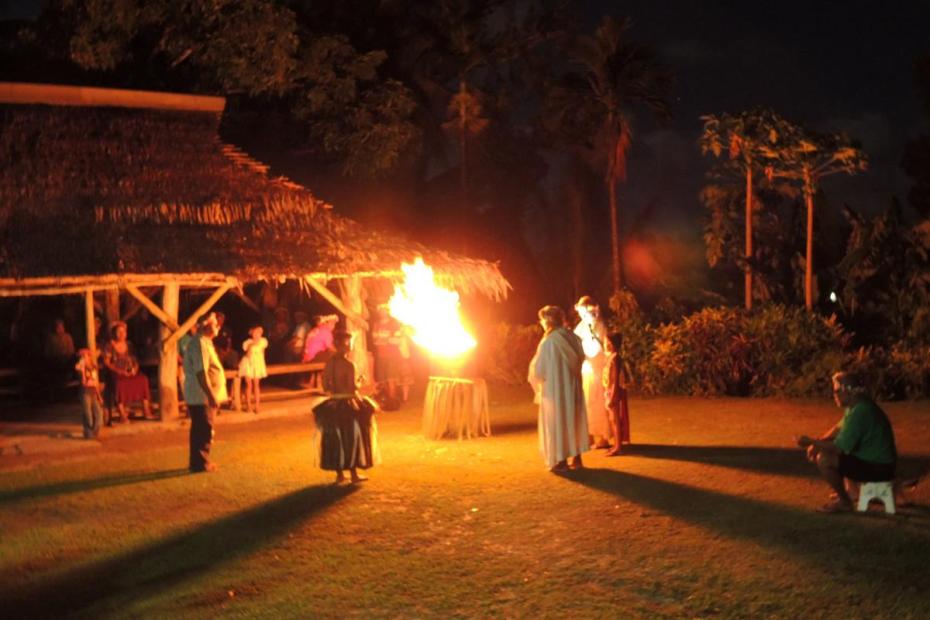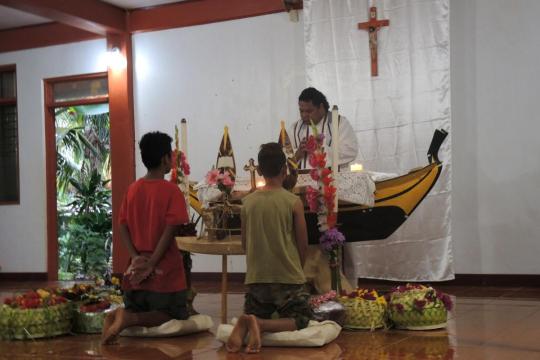As is true anywhere, Holy Week is a time of intense liturgical activity in Yap. The liturgy follows the normal Catholic form, augmented by two especially interesting rituals, the doloolow, a mourning ritual at the Cross on Good Friday, and the thanksgiving dance for the Easter vigil.
The Holy Thursday liturgy recorded here is from the village of Gergey, an area on Yap set aside for Outer Islanders who have moved to Yap proper. As Outer Islanders, they speak Chuukic languages (and usually English) but not much Yapese. They have been given a special plot of land to share because as non-Yapese they do not belong to the lineage kinship system that regulates land ownership on the rest of Yap’s main islands.
Holy Thursday liturgy was celebrated without particular adaptation. The ritual Washing of the Feet took place only with men, because, as both a man and several women described, in light of traditional local cultural norms it would be extraordinarily awkward for both the man and the woman to have a woman’s foot touched in public, especially to have a man down near a woman’s legs when she was seated in a chair. Catholics had made exceptions to many cultural rules over the years to enable ritual interactions at church, including having women communion ministers, but so far this is not one people feel ready to broach.
The chapel at Gergey is a solid building designed by the government to safely shelter the whole village in the event of a typhoon, but absent that circumstance, villagers mostly use as their church. The men of the community designed and built a boat-like altar, and a processional cross in the form of a boat paddle. Worshippers in the church sat on the floor, which is a sign of modesty and humility. Many milled outside the church, though there was room inside.
For the offering on Holy Thursday, members of the community prepared flower garlands and beautiful woven baskets decorated with flowers, each containing food and destined for the poor of the community.
Good Friday liturgies at two parishes included the reading of the Passion and an opportunity to reverence the Cross, along with a doloolow, an emotional ritual of wailing by women from the parish to mourn the sacrifice of Jesus on behalf of the people.
At the Easter vigil and Easter Sunday Masses, the majority of congregants, both men and women, wore nuunuw, flower garlands, on their heads. Intricately woven with different freshly gathered flowers and leaves, the nuunuw serves as a way of welcoming another and showing love. On Easter, when the time came for the kiss of peace, those who wore nuunuw either exchanged them, or simply gave theirs to some person without one as a sign of peace.
